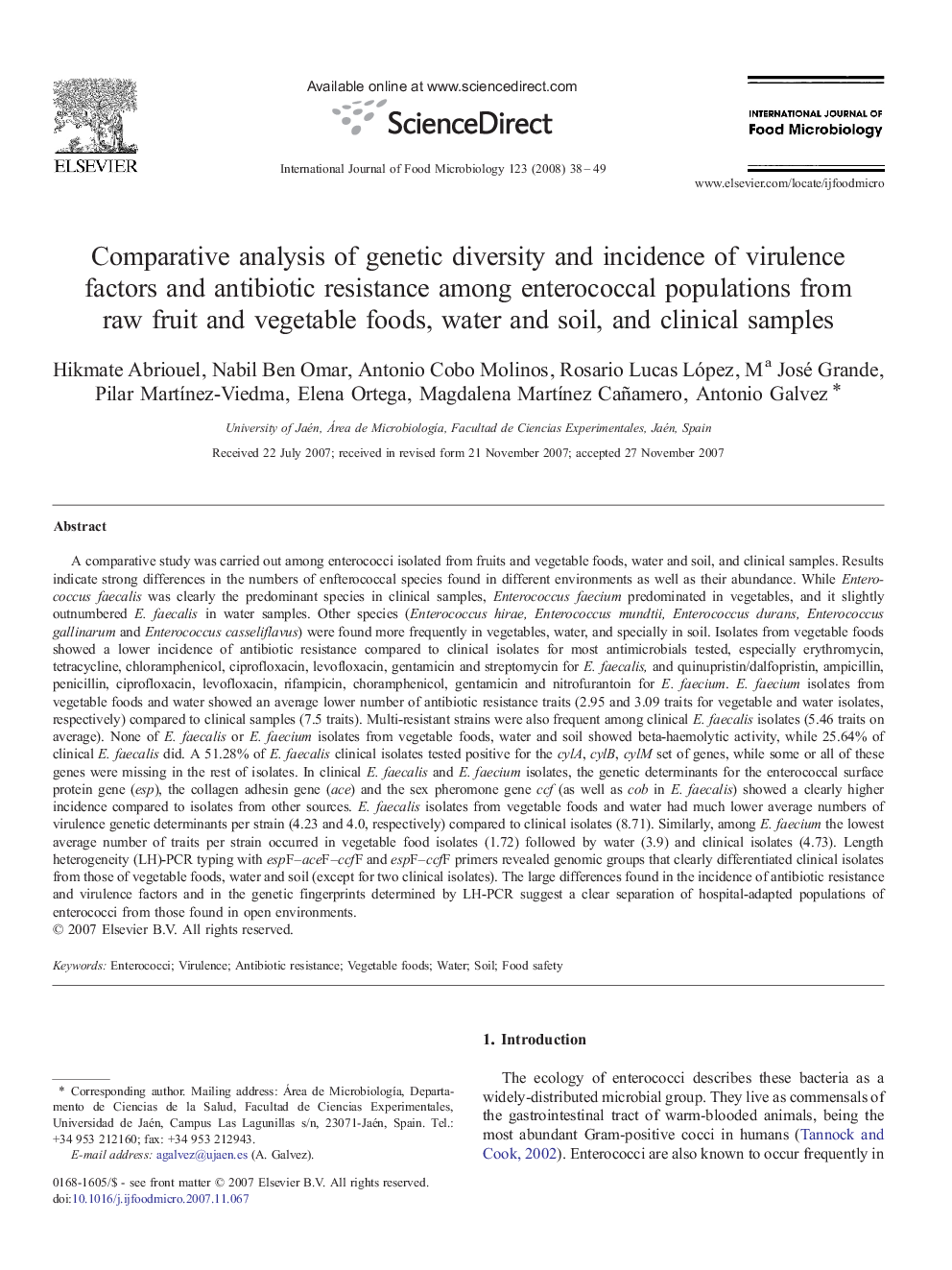| کد مقاله | کد نشریه | سال انتشار | مقاله انگلیسی | نسخه تمام متن |
|---|---|---|---|---|
| 4368658 | 1616729 | 2008 | 12 صفحه PDF | دانلود رایگان |

A comparative study was carried out among enterococci isolated from fruits and vegetable foods, water and soil, and clinical samples. Results indicate strong differences in the numbers of enfterococcal species found in different environments as well as their abundance. While Enterococcus faecalis was clearly the predominant species in clinical samples, Enterococcus faecium predominated in vegetables, and it slightly outnumbered E. faecalis in water samples. Other species (Enterococcus hirae, Enterococcus mundtii, Enterococcus durans, Enterococcus gallinarum and Enterococcus casseliflavus) were found more frequently in vegetables, water, and specially in soil. Isolates from vegetable foods showed a lower incidence of antibiotic resistance compared to clinical isolates for most antimicrobials tested, especially erythromycin, tetracycline, chloramphenicol, ciprofloxacin, levofloxacin, gentamicin and streptomycin for E. faecalis, and quinupristin/dalfopristin, ampicillin, penicillin, ciprofloxacin, levofloxacin, rifampicin, choramphenicol, gentamicin and nitrofurantoin for E. faecium. E. faecium isolates from vegetable foods and water showed an average lower number of antibiotic resistance traits (2.95 and 3.09 traits for vegetable and water isolates, respectively) compared to clinical samples (7.5 traits). Multi-resistant strains were also frequent among clinical E. faecalis isolates (5.46 traits on average). None of E. faecalis or E. faecium isolates from vegetable foods, water and soil showed beta-haemolytic activity, while 25.64% of clinical E. faecalis did. A 51.28% of E. faecalis clinical isolates tested positive for the cylA, cylB, cylM set of genes, while some or all of these genes were missing in the rest of isolates. In clinical E. faecalis and E. faecium isolates, the genetic determinants for the enterococcal surface protein gene (esp), the collagen adhesin gene (ace) and the sex pheromone gene ccf (as well as cob in E. faecalis) showed a clearly higher incidence compared to isolates from other sources. E. faecalis isolates from vegetable foods and water had much lower average numbers of virulence genetic determinants per strain (4.23 and 4.0, respectively) compared to clinical isolates (8.71). Similarly, among E. faecium the lowest average number of traits per strain occurred in vegetable food isolates (1.72) followed by water (3.9) and clinical isolates (4.73). Length heterogeneity (LH)-PCR typing with espF–aceF–ccfF and espF–ccfF primers revealed genomic groups that clearly differentiated clinical isolates from those of vegetable foods, water and soil (except for two clinical isolates). The large differences found in the incidence of antibiotic resistance and virulence factors and in the genetic fingerprints determined by LH-PCR suggest a clear separation of hospital-adapted populations of enterococci from those found in open environments.
Journal: International Journal of Food Microbiology - Volume 123, Issues 1–2, 31 March 2008, Pages 38–49